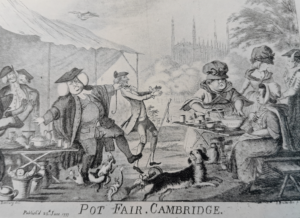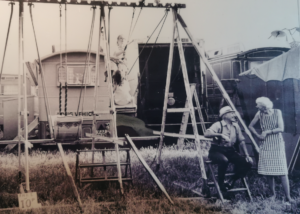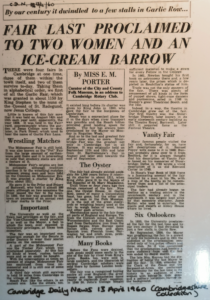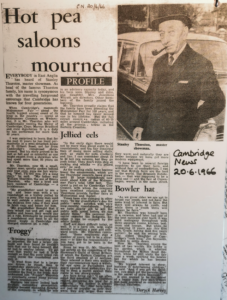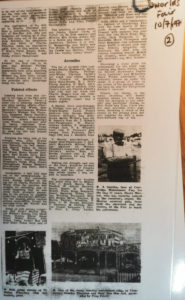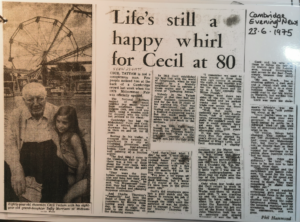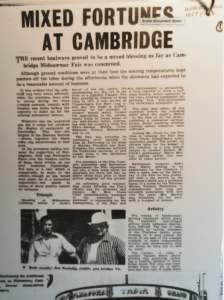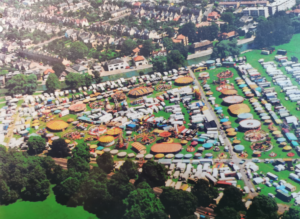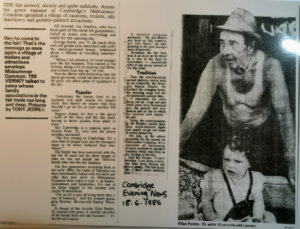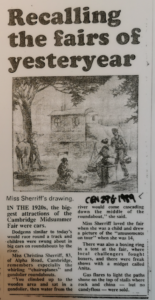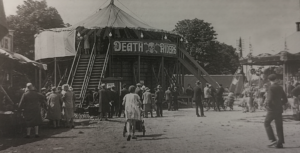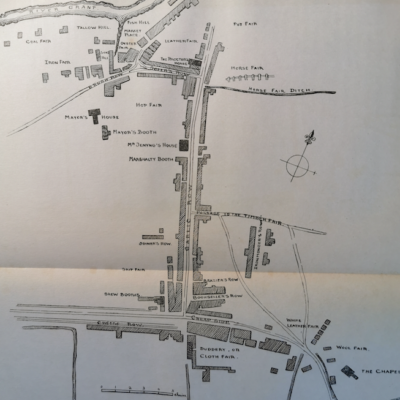Search by topic
- archaeology
- Building of Local Interest
- chapel
- charity
- church
- crime
- dressmaker
- fire
- Great Eastern Railway
- Listed building
- Mapping Relief
- medieval
- oral history
- poverty
- Public House
- Religious House
- Roman
- scholar
- school
- Then and Now
- tudor
- women
- work
- world war one
- world war two
Search by text
 Photo by Elmira Zadissa, 2017
Photo by Elmira Zadissa, 2017Midsummer Market and Fair
One of the oldest fairs in England
The Midsummer Market and Fair dates back to a charter granted by King John in 1211 and is one of the oldest fairs in England. Irish Travellers and Romany Gypsy communities have travelled to and traded at the fair for hundreds of years. Jean O’Brien and Eileen O’Brien are two young sisters whose family members have traded at the fair.
In these clips, Jean interviews her younger sister about the Midsummer Fair. What does she do, hear and see at the fair?
Oblique Arts has over the past year been working with the project “Oral Histories: Roma & Traveller Communities in Cambridgeshire”. Focusing on Traveller fairs, which have existed for centuries, we are collecting stories about families, trading at the fairs, travelling between fairs and the nature of changing experiences. The project is funded by Heritage Lottery Fund.
For more stories visit www.oblique-arts.com
See Enid Porter’s article about the Fair:
Alison Taylor (Cambridge The Hidden History p. 114) says:
Midsummer Fair was granted to Barnwell Priory in 1211, to be held from 22-25 June, but like [the fair at] Reach its antecedents are undoubtedly much earlier than this, as its date during the pagan midsummer festivals suggests. The Priory itself was sited by a sacred well….. The burgesses of the town started to take over this fair in the middle ages, and had complete control after 1506…… By the late eighteenth century it was particularly known for selling pottery, after which it acquired the name of Pot Fair.
A Royal Proclamation cancelled the Fair in 1666 ‘for fear of spreading infection to Cambridge, which is now free.’ This was during the plague of 1665-1666.
Henry Gunning, in his reminiscences of Cambridge, included a description of the fair as it was at the end of the eighteenth century. By the mid 19th cent. the fair was in decline but the introduction of steam-powered rides after 1870 brought greater excitement.
Mary Greene’s remembers her experiences at Midsummer Fair in her autobiography, The Joy of Remembering.
A B Gray in Cambridge Revisited (1921) notes:
Midsummer Fair, or ‘Pot Fair’ as it was familiarly called, owing to the large amount of crockery sold there, was granted by Henry III to the Priory of Barnwell in 1229, but was subsequently awarded to the town in 1505-6. The Fair has helped to add a new word to our language, for here, during the 16th and early part of the 17th century, when they were much worn by women, could be bought the gay and tinselled “Tawdrey Laces.” St Audrey (or Etheldreda), we are told was wont, in her youth, to adorn herself with manifold splendid necklaces, and considered the affection of her throat which caused her death to be a punishment for her early vanity. This story gave rise to the quaint custom of selling ay her annual fair at Ely silken laces or neckties, known as St Audrey’s Laces. The custom spread to other fairs, the name was corrupted to Tawdrey Laces, the emblems of the saint degenerated into pretentious and gawdy adornments, and the term “Tawdrey” came into common use as a synonym for cheap finery.
Contribute
Do you have any information about the people or places in this article? If so, then please let us know using the Contact page or by emailing capturingcambridge@
License
This work is licensed under CC BY-NC-SA 4.0





